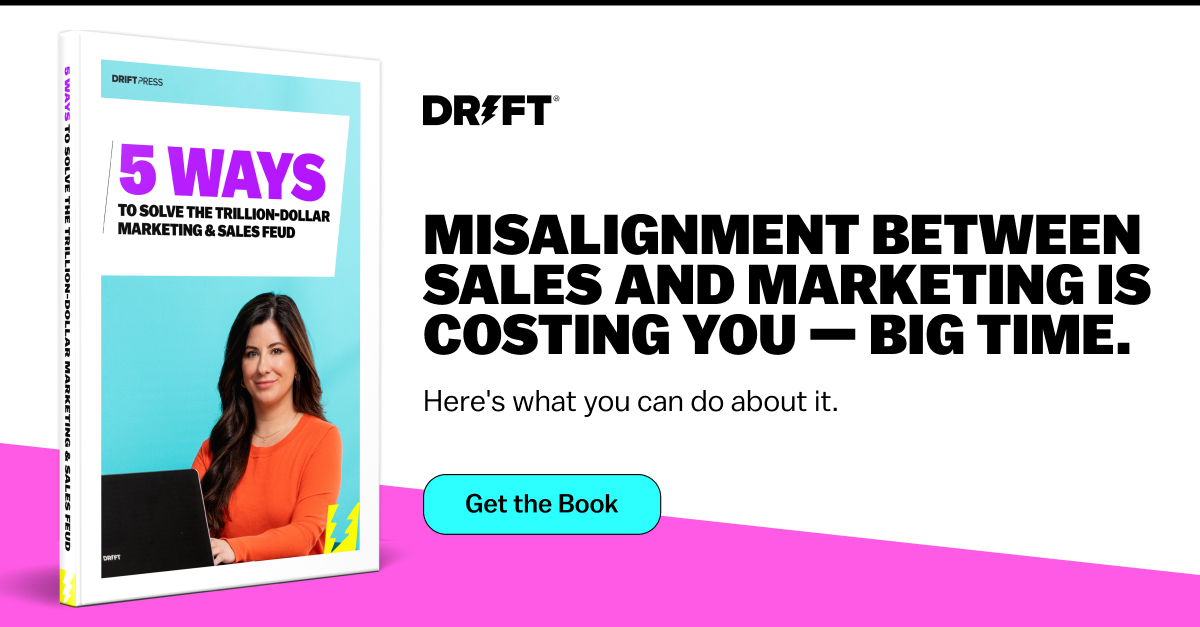Take a look through any seller’s job description, and no matter the level, you’ll find a long list of tasks to manage. From cold outreach and discovery calls to finalizing deal paperwork, sellers are nothing if not busy.
But busy isn’t good enough if you want to achieve your quota.
In an ideal world, your sales outreach doesn’t get buried in crowded inboxes or lead to dozens of no-shows (or worse, a meeting with an unqualified buyer). Your efforts have to translate into real, qualified pipeline and ultimately, enough closed deals. And for that, you want to be productive.
I’ve been working in sales for 20 years, and while a lot has changed, one of the things that remains a constant is that the most productive sellers all have one thing in common: great pipeline management.
Here’s everything you need to know about pipeline management and how it can help you turn sales opportunities into sales successes. Let’s go ⚡️
What Is Pipeline Management and Why Is It Important?
So that we’re all on the same page, let’s start by defining sales pipeline management. (Feel free to skip ahead to the best practices section if you’ve got the basics covered.)
Sales pipeline management is the process of managing and moving deals from beginning to end — tracking their progress from discovery to close. Pipeline management ultimately comes down to how you’re going to hit your sales numbers.
Executing pipeline management involves looking at everything from your outreach at the top of the funnel down to expansions and renewals, all to make sure that your team is on track to hit revenue targets. Basically, if it’s a task that plays a part in generating revenue, then it falls under pipeline management. (And let’s be real, you shouldn’t be wasting time on very many non-revenue generating activities anyways.)
So, let’s say you have a quota of $750,000 per year. Under pipeline management, you would need to know how much pipeline is required to hit that quota, breaking it down across your sales funnel metrics — from accounts worked to meetings booked to deals closed. That gives you the information you need to know whether your sales team is on the right track.
In essence, if you want to close deals faster and make quota more quickly, then you have to be great at pipeline management.
Sales Pipeline vs. Sales Funnel
A sales pipeline is a series of stages that a seller will have to lead a prospect through to turn them into a customer. On the other hand, a sales funnel is a map of the buyer’s journey to becoming a customer. Simply put, the sales pipeline is from the seller’s point of view, while the sales funnel is from the buyer’s point of view.
The best sales reps follow a repeatable, predictable motion that helps get buyers from stage to stage. This makes up the sales pipeline which acts as a roadmap for sellers by highlighting what activities should be taking place in the sales cycle. At Drift, our pipeline goes from Meeting → Opportunity → Best Case → Most Likely → Commit→ Closed Won

Meanwhile, the sales funnel helps sellers keep a pulse on the conversion rates between stages. It’s your funnel that allows you to work backwards from your overall quota to understand how many opportunities you’ll need to work in the first place. Your sales funnel answers questions like:
- How long does each lead spend at each buying stage?
- On average, how long does it take to close a sale?
- How many new leads enter the pipeline per month?
- What’s the average conversion rate?
- What percentage of leads drop out at each stage?
Here’s an example of an SDR conversion funnel:

By understanding the breakdown of deals across funnel stages, you can better forecast when you’ll hit your quota. This will help determine which levers you should pull throughout your sales pipeline in order to successfully reach your goals.
5 Sales Pipeline Management Best Practices
Pipeline management isn’t the type of sales strategy that you work on at the beginning of the year or the beginning of a quarter. It’s something you need to engage in every day.
Every day, you need to know who you should be talking to, where each deal is in the pipeline, and your progress towards your quota. Easy, right? 🫠
Luckily, productive selling isn’t so out of reach. Here are five pipeline management best practices I train all my reps to do 👇
1. Go Into Every Deal with a Value-Creation Mindset
Everyone knows that sales reps have a quota. But you can’t let your buyer feel like they’re just another number for the books.
Instead, every interaction you have with a buyer needs to create value in some way. That could be alerting the buyer to a problem they weren’t aware of, informing them about new trends and strategies, offering insights from an in-house report, or anything in-between.

To do this, start by doing research upfront on your buyer and their company. Look into their growth stage, team structure, the product and services they offer, and more to figure out exactly how they would be a good fit for your solution.
Then, when you get on that first call, ask relevant questions and coach them on best practices. You may end up not even mentioning your company. What matters is that you are connecting the dots for your buyers and delivering insights that they can’t get with anyone else.
2. Take the Guessing Out of Your Selling
Sales is both an art and a science. But far too many sales reps ignore the numbers — even though they can help determine which opportunities are best or even ready to commit.
At Drift, our website is our bellwether. We know that site activity is the best way for us to know if a buyer is serious about buying from us or is already part of our community. We’re constantly leveraging buyer insights and intent data to understand exactly who is browsing our website and what they are looking for to tailor the sales experience to them.
The more personalized you make your sales process, the better. With the right tools in play, you won’t have to guess whether someone is interested in your solution or whether they would be a good fit for your products. You’ll be able to instantly answer all these questions:

3. Find Your Dealbreakers Before They Happen
How many times have you been excited about a deal, confident it will close…only for it to fall apart at the very last minute?
Balancing optimism with paranoia and skepticism is one of the trickiest things about being in sales. We do need to think about all the ways your deal might not happen. That’s why we do deal reviews every week with our reps (while also evaluating the health of our pipeline). During these reviews, ask yourself questions like:
- Can we quantify the business problem we’re solving?
- Why is this important right now for the buyer and their company? What is the impact?
- What is the next step, and what are the blockers?
- Have we agreed on a timeline for the evaluation? How soon do we need outcomes?
- What other options do they have to solve this problem?
- Does our champion have the influence and access to push the deal through?
- What competing priorities could derail the deal?
- Who is on the buying committee, and do we have everyone on board?
It’s up to you to proactively understand your deals and what’s going to move them forward. By poking holes in the deal process, you gain a full understanding of any objections that may come up so you can fight through any inertia or friction that might occur while closing the sale. It’s all about knowing what problems are coming before they happen — and being ready to solve them.
4. Pull Multiple Levers At Once
Every stage of your sales pipeline is an opportunity to add another deal to your quota.
Think of them as levers — all of which you can leverage to attain your big-picture revenue goals. As you manage your pipeline, there are four different levers you can pull:
- Volume: Are you casting a wide enough net? Generate more pipeline by creating more opportunities through your sales activities.
- Leads: Who are you targeting, and are you targeting the right accounts? Make sure you’re qualifying and meeting with the right opportunities by looking at buyer intent.
- Deal size: Are you talking to the right stakeholders? Is there more than one problem to solve? Scrutinize the buyer’s processes and company structure and aim to sell bigger deals.
- Close rate: How can you be more compelling in your meetings? What do you need to successfully coach your internal champion? Put all the pieces in place to close more of the deals you work.
When you’re planning how to manage your pipeline, you should always know which lever you’re focusing on so you can better organize your sales activity and put your plan into action.
5. Manage Your Time to Manage Pipeline
Sellers wear so many hats. Their days are filled with sales prospecting, conducting deal meetings, following up post-meeting, prepping for next meetings, collaborating with other teams, working on expansions with current customers, and participating in training and team meetings.
All of it’s important, so how do you ensure you’re focusing on the right thing at the right time?
Time management is the crux of pipeline management. Since you only have a certain amount of time in the day, you need to be smart about how much time you’re going to spend on each activity so you’re always working towards closing the deal.
Build Better Sales Pipeline, Faster with Drift
Effective pipeline management boils down to knowing where your deals are in the sales cycle and having the right conversations to move things forward. And the best way to do that is to talk directly with your buyers.
This is where tech like Drift can make a huge difference.
Drift Conversation Cloud can help you zero in on the right buyers at the right time so you can engage them when they’re showing high intent. With real-time notifications and buyer insights, you can gain visibility into what your buyers want based on the web pages they visit, their engagements with sales, and their interactions with your brand. Get a demo today.








